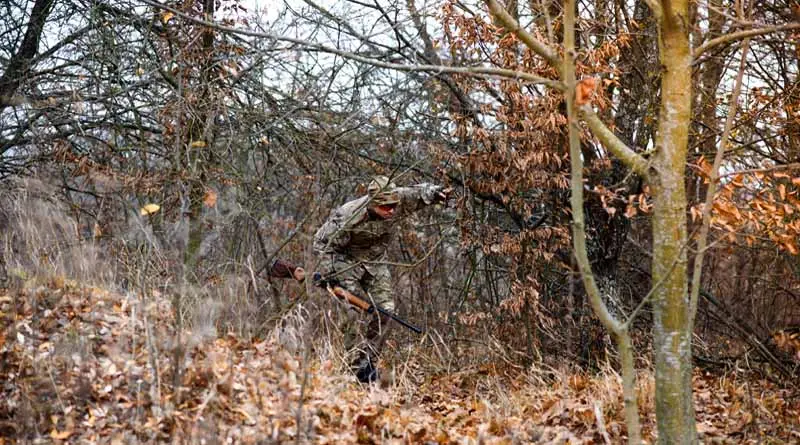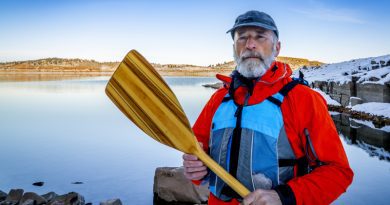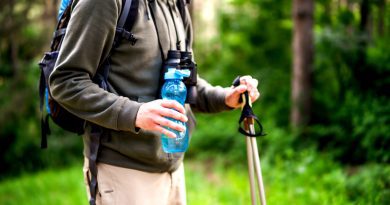
How Do I Track Wounded Game?
A Hunter’s Tale of Pursuit and Responsibility
In the world of hunting, the act of tracking a wounded animal is both a skill and a solemn duty. It is about respect for the creature and for the natural world that grants us these opportunities. When an animal is hit but not immediately downed, the ethical implications are as significant as the practical challenges. This narrative is not just about the how but also the why of tracking wounded game.
The Initial Challenge: Understanding the Impact of the Shot
When the trigger is pulled, a cascade of variables immediately influences the outcome. Distance, for instance, affects bullet drop and might cause a lower hit than aimed. Wind can drift the projectile off its intended path, leading to a peripheral hit rather than a vital one. Animal movement is perhaps the most unpredictable element; a step forward or a turn at the moment of the shot can change a potential heart or lung shot into a less lethal impact.
Even the most seasoned hunter faces the initial challenge of recognizing whether the game is merely wounded. This recognition phase is crucial and demands acute observational skills. It is challenging to determine the severity of a hit instantly because an animal’s response can range from a noticeable flinch or stumble to an adrenaline-fueled sprint. The sound of the bullet’s impact might give some indication— a thud suggesting a body hit, while a sharper crack might suggest a miss or a graze. Immediate behavior post-impact, such as running in an erratic pattern, can also indicate distress and injury.
Blood Trails: Decoding the Signs
The blood trail provides the most concrete evidence of a wound. The appearance and pattern of blood are pivotal in determining the nature of the injury.
- Dark, thick blood often indicates a hit to a major organ like the liver or kidneys. Such wounds are severe, suggesting the animal might not travel far before becoming incapacitated.
- Bright, frothy blood is indicative of a lung shot, which is characterized by air bubbles in the blood caused by lung punctures. This wound, while serious, might allow the animal to run a considerable distance due to adrenaline.
- Minimal blood might mean a muscle or a flesh wound, where the animal is likely to survive if not tracked down, but the trail will be sparse and tracking more difficult.
Navigating Terrain and Environmental Conditions
Different terrains present unique challenges for tracking. Dense forests can obscure blood trails and animal tracks, wetlands may wash away signs or make movement noisy and slow, and rugged mountainous areas can make tracking physically demanding and dangerous. Environmental conditions like rain and wind play a critical role; rain can erase blood spots and muddy prints, while wind can disperse scents that are vital for both human hunters and tracking dogs.
Time of Day Considerations
The time of day significantly influences tracking efforts. Dusk and nighttime add layers of difficulty as visibility decreases. Using artificial lights such as flashlights or tracking lamps must be done carefully to avoid startling the animal further, potentially pushing it to run even further away. Moreover, tracking at night raises safety concerns, making it imperative to be vigilant about the terrain and wildlife.
Best Practices for Effective Tracking
Preparation: The Keystone of Effective Tracking
The success of a tracking endeavor hinges fundamentally on preparation, which encompasses a broad and detailed understanding of the quarry. Knowing the anatomy of the game is critical; it not only aids in delivering a shot that is quick and humane but also reduces the likelihood of the animal suffering unnecessarily. For instance, understanding where the vital organs are located—such as the heart, lungs, and liver—can help a hunter aim in a manner that is likely to result in a clean, ethical kill.
Moreover, familiarity with local wildlife behavior is invaluable. Different species have varied reactions to being wounded; some may run a considerable distance, while others might hide nearby. Understanding these behaviors, coupled with knowledge of the local environment, helps in anticipating the animal’s likely escape routes or hiding spots. For example, deer tend to head downhill and towards water when injured, while boars might seek thick cover to hide.
Immediate Actions Post-Shot
The moments following the shot are equally pivotal. Initially, observing the direction in which the animal flees is crucial, as it provides the first clue to its path. Hunters must be vigilant and perceptive, noticing subtle signs like broken twigs, disturbed leaves, or direct visual confirmation of the animal’s trajectory.
Upon reaching the spot where the animal was hit, it’s essential to locate and mark the first signs of blood. This action serves as the starting point of the trail. Markers (often biodegradable tape or small flags) should be used to tag these initial spots and any subsequent blood signs or disturbed vegetation along the path. These markers help maintain a directional trail and assist in retracing steps if needed.
The Art of Employing Structured Search Patterns in Tracking Wounded Game
When tracking wounded game, the visibility and clarity of the trail can sometimes diminish, either due to environmental factors, the minimal nature of the wound, or the terrain itself. In such cases, relying solely on random searches can be inefficient and potentially fruitless. Instead, employing structured search patterns, such as grid or spiral patterns, becomes crucial for a methodical and comprehensive search.
Understanding Grid and Spiral Search Patterns
- Grid Search Pattern:
- Definition: A grid search involves dividing the search area into smaller, manageable sections, typically in a square or rectangular pattern. Each section is then searched systematically.
- Application: This method is particularly effective in open or semi-open terrains where visibility allows for clear demarcation of sections. The hunter, possibly along with a team, starts at one end of the grid and walks straight lines back and forth across the terrain, ensuring that every part of the section is thoroughly covered. This pattern helps in maintaining an organized approach and minimizes the chances of overlooking any signs.
- Spiral Search Pattern:
- Definition: In a spiral search pattern, the searcher starts at a central point—often the last known sign of the animal—and moves outward in a spiral. This can be either tightening (from the outside in) or expanding (from the inside out).
- Application: The spiral method is suited for areas where the last sign of the animal is clear but subsequent signs are uncertain. It is effective in dense terrains like thick forests or bushy areas, where the next signs are unpredictable and could be in any direction from the last known point.
Benefits of Structured Search Patterns
- Thorough Coverage: Both grid and spiral searches ensure that the area is covered systematically, reducing the risk of missing any subtle signs left by a wounded animal.
- Efficiency: By dividing the search area into manageable sections or methodically expanding from a known point, these patterns allow hunters to maximize their time and effort, making the search more efficient.
- Adaptability: These patterns can be adapted based on the terrain, visibility, and other environmental factors, making them versatile tools in the hunter’s toolkit.
- Team Coordination: When hunting in groups, these structured patterns facilitate better coordination among team members, ensuring everyone knows their specific area of responsibility, which enhances the effectiveness of the search.
Employing structured search patterns when tracking wounded game is not just about following a set of steps; it’s about embracing a strategic, thoughtful approach to ensure no area is overlooked. Whether opting for a grid or spiral search pattern, the fundamental goal remains the same: to ethically and effectively recover wounded game, fulfilling the hunter’s responsibility to the animal and to the principles of ethical hunting. Through meticulous planning and execution of these search patterns, hunters can significantly increase their chances of a successful recovery, even under challenging conditions.
Implementing the Search: A Detailed Guide to Tracking Wounded Game
When the trail of a wounded animal fades, a hunter’s acumen and methodical approach become vital to continuing the pursuit effectively. Here’s how to implement the search methodically:
1. Assess the Last Known Sign of the Animal
The first step in continuing the search is to thoroughly assess the last known sign of the animal. This could be a spot of blood, a broken twig, a partial print, or any disturbance that indicates the animal’s presence. This assessment should consider:
- Quality of the Sign: Evaluate how distinct and fresh the sign is to estimate how long ago the animal passed.
- Surrounding Clues: Look for other subtle signs in the vicinity that might not initially stand out. This could include displaced leaves, bent grass, or small droplets of blood that can indicate the direction of travel.
- Environmental Factors: Consider environmental factors such as wind direction, which might have carried scents or influenced the animal’s path, and weather conditions that could alter the visibility or preservation of signs.
2. Choose a Search Pattern Based on the Terrain and the Trail’s Nature
Selecting an appropriate search pattern is crucial and should be based on both the nature of the trail’s disappearance and the characteristics of the terrain:
- For Clear, Open Areas: A grid search might be more effective as it allows for systematic coverage without missing any sections.
- For Dense or Uneven Terrain: A spiral search pattern starting from the last known sign can be more practical. This method is beneficial where visibility is limited and the animal’s path is less predictable.
- For Varied Terrain: Sometimes a combination of patterns might be necessary, starting with a spiral to expand outward from the last sign, then switching to a grid if a larger area needs to be covered.
3. Use Markers to Denote already-searched Searched Areas and Findings
Using markers is a critical part of maintaining an efficient search:
- Types of Markers: Use environmentally friendly markers such as biodegradable tape or natural items like stacked stones to mark the last known sign and any subsequent findings.
- Purpose of Markers: Markers help to avoid rechecking the same areas and ensure that all searchers are aware of which areas have been covered and what has been found.
- Documentation: Keep a simple map or use a GPS device to note where markers have been placed, especially in vast or complex landscapes.
4. Remain Attentive and Patient
Patience and vigilance are essential:
- Expect Unpredictable Behavior: Wounded animals might not follow a straight path. They could double back, make sudden turns, or even circle to familiar territory.
- Stay Alert: Keep all senses tuned for any noise, movement, or change in the environment that might indicate the presence of the animal.
- Patience Is Key: The process can be lengthy and demanding, with the possibility of minimal signs for extended periods.
5. Continual Reassessment
As the search progresses, continually reassess the situation:
- Review Findings: Periodically stop to review what has been found so far and adjust the search pattern or strategy if necessary.
- Check for Patterns: Sometimes, the animal’s behavior or the nature of its injuries can create patterns in the signs that you find. Recognizing these can provide insights into the animal’s condition and possible next moves.
Implementing a search for a wounded animal is a testament to a hunter’s skill and ethical commitment to the sport. By methodically applying these steps, hunters not only increase their chances of successfully recovering the game but also uphold the principles of responsible and humane hunting practices. This approach ensures that the pursuit, even when challenging, remains a respectful engagement with wildlife.
The Role of Trained Tracking Dogs in Hunting Wounded Game
Ethical Considerations and Responsibilities
The process of tracking wounded game is not just a test of skill but also a measure of the hunter’s ethics and respect for nature. Each step in the tracking process should be conducted with an acute awareness of the moral implications and a commitment to humane practices. This respect for the animal underscores the essence of ethical hunting—minimizing suffering and ensuring that every effort is made to recover wounded game.
By approaching tracking with preparedness, precision, and respect, hunters embody the ethos of responsible wildlife management. This not only ensures the sustainability of hunting practices but also honors the spirit of fair chase and respect for the animal, essential components of modern ethical hunting.
Tools of the Trade
Successful tracking requires more than keen senses and knowledge. Specific tools can aid significantly:
- High-quality flashlight or headlamp: essential for tracking in low-light conditions.
- Flagging tape: To mark the trail without harming the environment.
- GPS or mapping device: To keep track of your location, especially in unfamiliar or vast areas.
- Binoculars: To scan ahead and possibly locate the animal from a distance.
- Tracking dog: When regulations and conditions allow, a well-trained dog can be the difference between a successful recovery and a lost animal.
Tracking wounded game closes the circle of a hunter’s commitment to ethical hunting. It’s not merely about the pursuit or the initial success of the hunt but about fulfilling the responsibility towards the game pursued. This narrative, drawn from personal experience and shared in respect for both the game and the environment, underscores a fundamental hunter’s ethos: we owe our quarry swift recovery, respect in pursuit, and gratitude for the sustenance and experience they provide.






